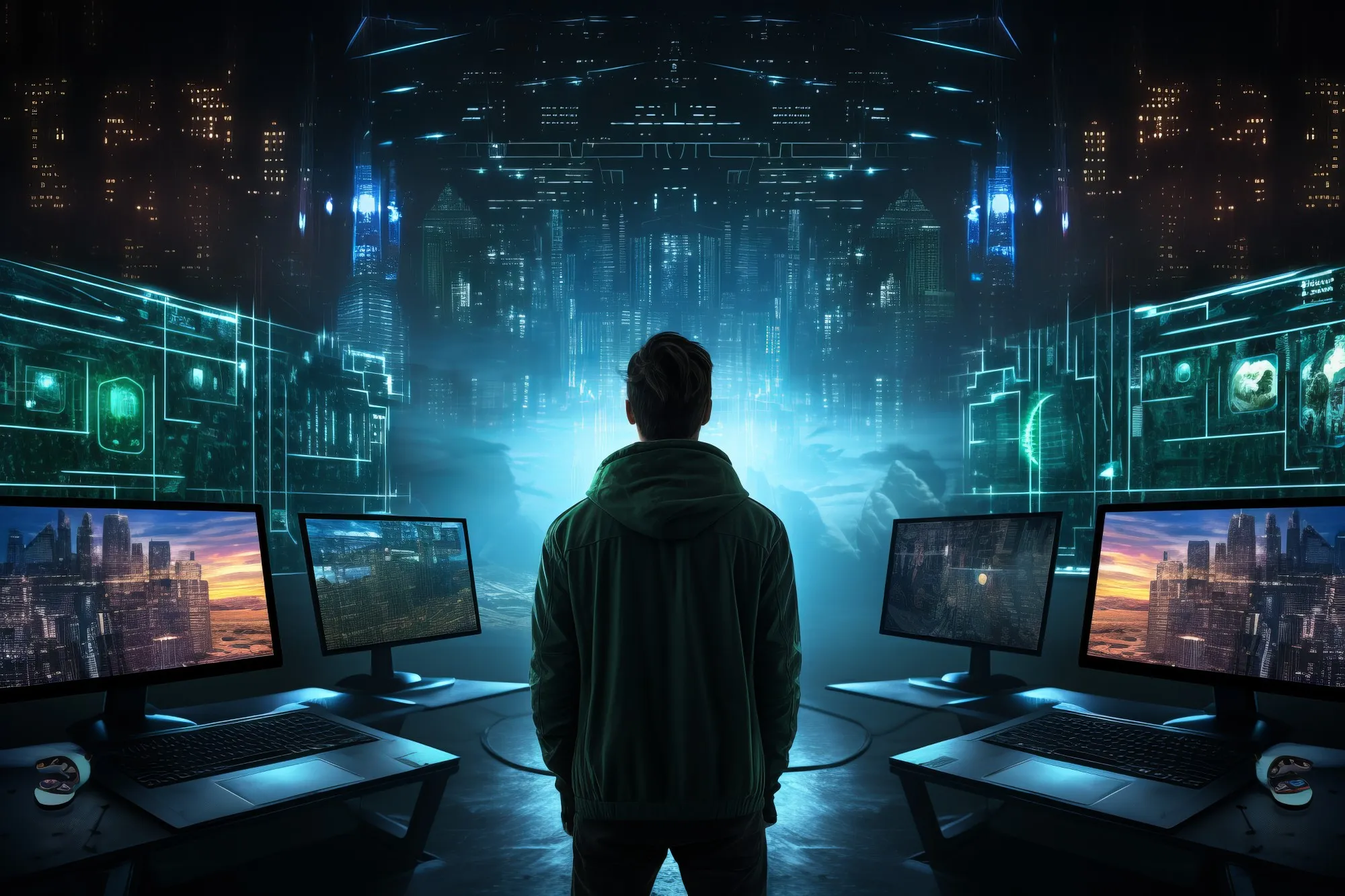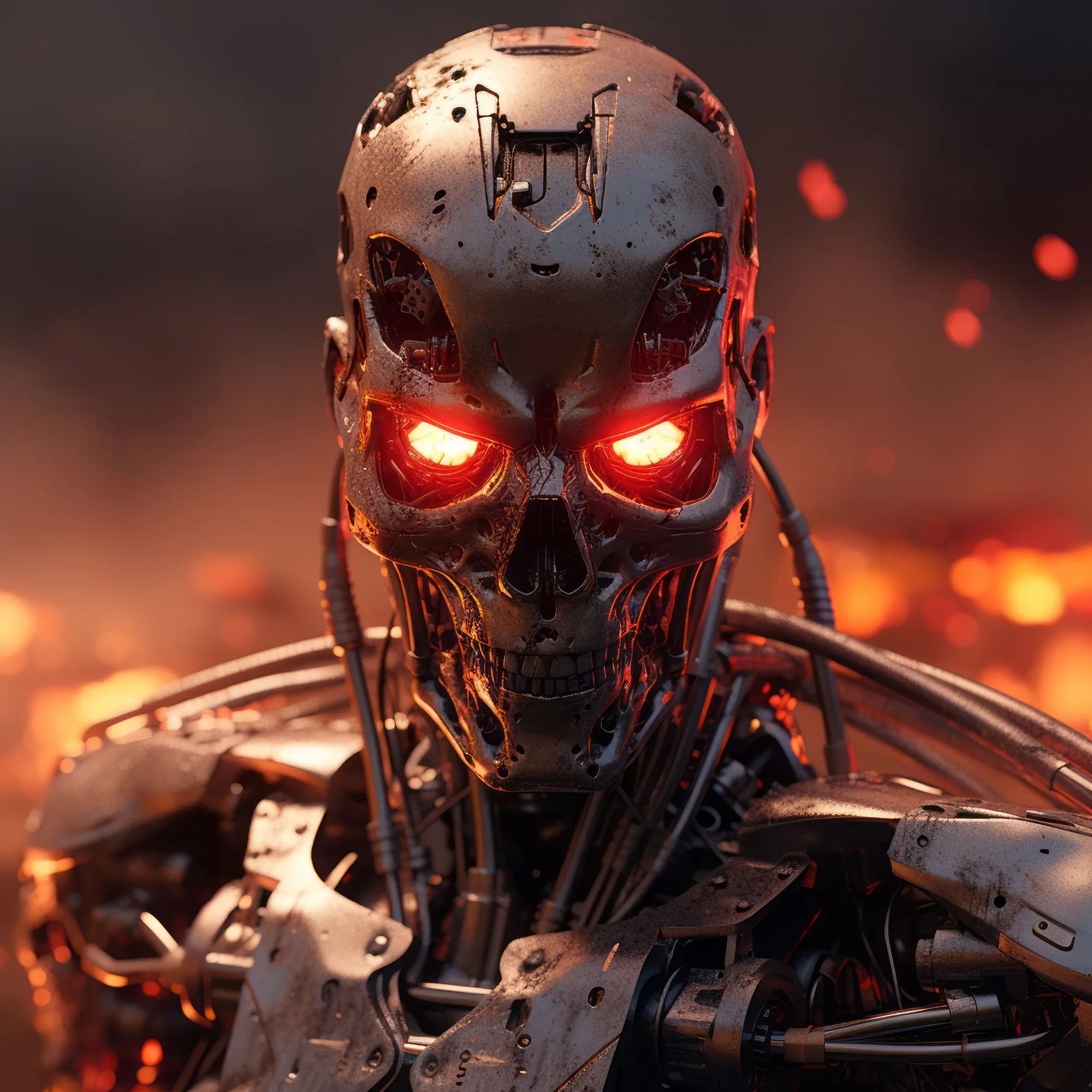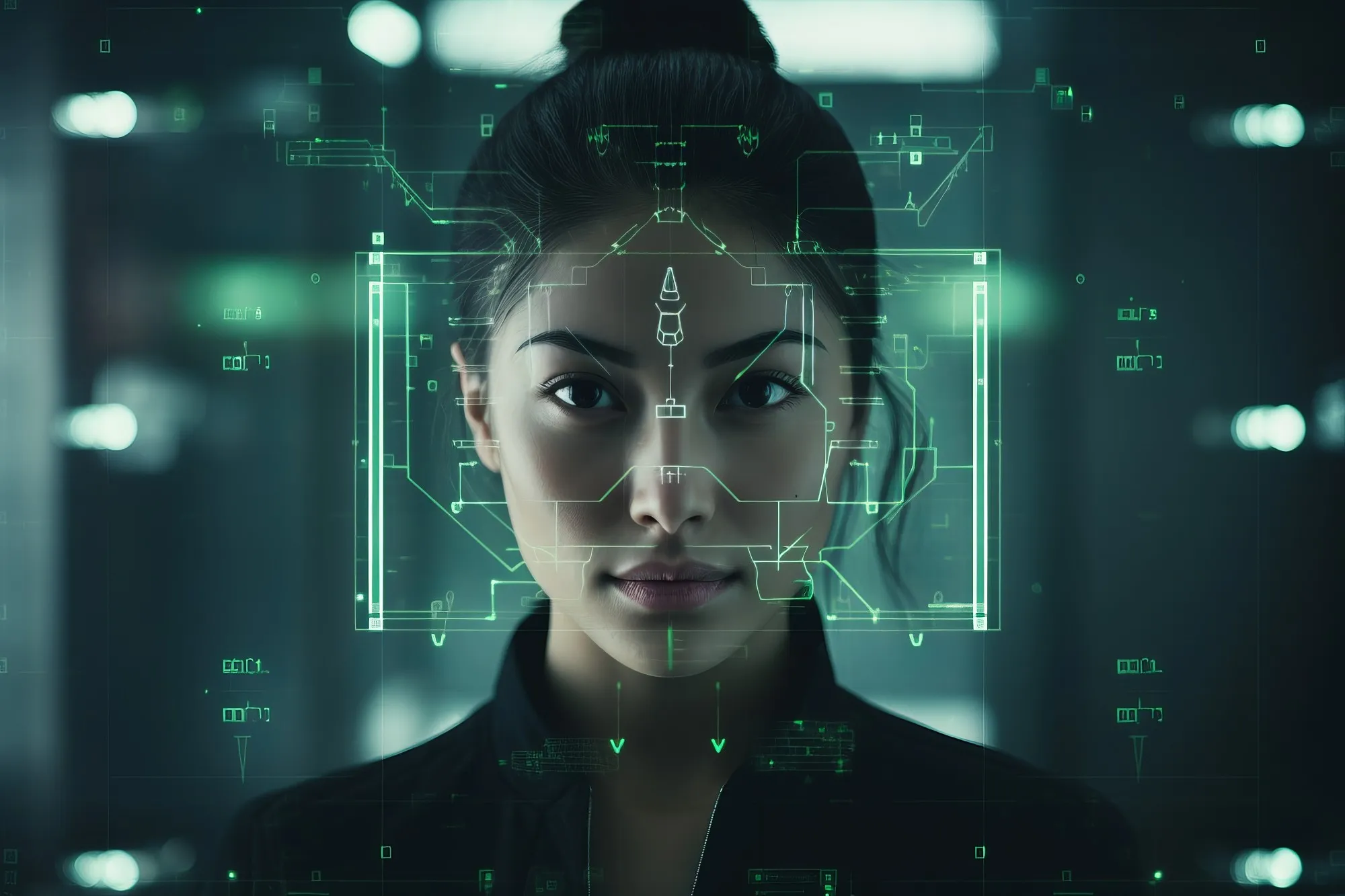In a world increasingly permeated by technology, it's easy to dismiss innovations as mere gimmicks. But AI voices and deepfakes are far more than that; they are revolutionary technologies that have the potential to fundamentally change the way we communicate, work and even think.
First of all, AI voices are not just an evolution of the text-to-speech technology we know from GPS devices or voice assistants. They are a quantum leap in the quality and versatility of speech synthesis. By using artificial intelligence, these voices can simulate emotions, intonations and even dialects, making them a compelling alternative to human speakers. Take a look at this video, which is already 5 years old but still amazes me (in it, the Google AI makes reservations in the restaurant and at the hairdresser).
Deepfakes , on the other hand, open up a whole new world of video production and manipulation. They make it possible to create realistic videos in which people say or do things that they have never said or done. Of course, this has its downsides, but it also offers incredible opportunities for creative or educational applications. Just imagine if historical figures could be "brought back to life" in educational films or actors could slip into roles they could never physically play.
But it's not just about the technology itself, but also about what it enables. In the business world, AI voices and deepfakes can help reduce costs, increase efficiency and enable new forms of customer interaction. In art and entertainment, they can open up new forms of storytelling and creative expression.
In short, AI voices and deepfakes are not just fascinating technological achievements; they are tools with the potential to impact our society in diverse and profound ways. That's why it's important to see them not as mere gimmicks, but as what they really are: Key technologies of the future.
Table of contents
History of text-to-speech technology: A brief overview of the development of text-to-speech from its beginnings to the present day

Text-to-speech (TTS) technology has a long and fascinating history that goes far beyond the modern applications of AI voices and deepfakes. The first attempts to make machines speak date back to the 18th century, when inventors such as Wolfgang von Kempelen created mechanical devices that could produce simple sounds and words. However, these early "speaking machines" were more curiosities than practical tools.
In the 20th century, TTS technology made significant leaps forward thanks to advances in electronics and computer science. The first computer-based TTS systems came onto the market in the 1960s and were mainly used in research laboratories. They were expensive, bulky and had a very limited word selection. But they laid the foundations for what was to come.
In the 1980s and 1990s, TTS systems became increasingly sophisticated. They found application in a range of products, from educational software for children to speech synthesizers for people with speech disabilities. But despite these advances, the voices produced often sounded robotic and unnatural.
The real breakthrough, however, came with the advent of artificial intelligence and machine learning. Suddenly it was possible to create voices that could simulate not only words, but also emotions, intonations and even dialects. These 'AI voices' are at the heart of many modern applications, from virtual assistants like Siri and Alexa to the deepfakes we know today.
So the journey of TTS technology is a story of constant innovation and improvement, from the first mechanical devices to the sophisticated AI systems of today. And while we have not yet reached the end of this journey, it is clear that the possibilities offered by this technology will only continue to grow.
What are AI voices? An introduction to the technology behind AI voices and how they differ from traditional text-to-speech systems
AI voices are the next evolutionary step in the world of text-to-speech technology. While traditional TTS systems are based on pre-programmed algorithms and a fixed database of voice samples, AI voices use machine learning and artificial intelligence to produce a much more realistic and versatile voice output.
Technology behind AI voices
The technology behind AI voices is usually a neural network that has been trained on huge amounts of speech data. These networks are able to capture the nuances of human speech, including intonation, pace and emotion. The result is voices that sound so realistic that they are often almost indistinguishable from real human voices.
Versatility and adaptability
Another advantage of AI voices is their adaptability. As they are based on machine learning, they can 'learn' to adapt to different contexts and requirements. This means that they are not only able to simply read out a text, but also interpret it with the right emphasis and emotion, depending on what the context requires.
Differences to traditional TTS systems
Compared to traditional TTS systems, AI voices offer a number of advantages. Not only are they more realistic and adaptable, but they are often more efficient in terms of computing power. While older TTS systems required specialized hardware and a lot of computing power, modern AI voices can often run on standard hardware and even mobile devices.
Ethics and responsibility
However, it is important to emphasize that the technology also raises ethical issues. The ability to generate realistic human voices carries the risk of misuse, from identity theft to disinformation. It is therefore crucial to use this powerful technology responsibly. Legal consequences of deepfakes are described in this article: https://www.anwalt.org/deepfakes/
Overall, AI voices are a revolutionary development in the world of voice technology. Not only do they offer improved functionality and versatility, but they also open the door to a host of new applications and possibilities that would have been unthinkable in the past. They are a perfect example of how artificial intelligence can change our lives in profound and diverse ways.
Areas of application for AI voices: From advertising to customer service - where AI voices are already being used successfully

The possible applications of AI voices are diverse and extend far beyond the limits of traditional text-to-speech systems. In this chapter, we take a look at some of the most exciting and innovative areas of application.
Advertising and marketing
In the advertising industry, AI voices can be used to create personalized and engaging commercials. Instead of hiring a human voice actor for each campaign, companies can use AI voices to deliver their messages in different languages and dialects, often in less time and at a lower cost.
E-learning and education
In education, AI voices can help to make learning materials more accessible and engaging. For example, they can be used in interactive courses to provide explanations or instructions and can even be programmed to respond to learners' questions.
Customer service and support
In customer service, AI voices offer the opportunity to automate support without losing the human touch. They can be used in chatbots, automated telephone hotlines or even real-time support systems to handle customer queries efficiently and effectively.
Entertainment and media
In the entertainment industry, AI voices can be used in podcasts, audiobooks or even movies and video games. Their ability to produce realistic and emotional voice output makes them an attractive option for producers and creatives.
Healthcare
In healthcare, AI voices can be used to convey patient information, support therapy sessions or even act as virtual health assistants. Their versatility and adaptability make them a valuable tool in an industry where the quality of communication is often crucial.
Summary
The applications for AI voices are almost limitless and span a wide range of industries and contexts. Their versatility, efficiency and ability to simulate human-like interactions make them one of the most exciting and promising technologies of today. They are not only a testament to the progress of AI research, but also an example of how this technology can be used to solve real-world problems and make people's lives easier.
Benefits of using AI voices in companies: Cost efficiency, time savings and other benefits
The integration of AI voices into business processes offers a number of benefits that go far beyond mere automation. In this chapter, we highlight some of the most important aspects that make AI voices so attractive for companies.
Cost efficiency
One of the most obvious benefits is cost efficiency. Hiring professional voice actors for advertising campaigns, training materials or customer service can be expensive. AI voices offer a cost-effective alternative that is often just as effective.
Time saving
Time is money, especially in the business world. AI voices can produce a large amount of material in a very short space of time. This is particularly useful for companies that need to respond quickly to market changes or customer demands.
Scalability
AI voices are extremely scalable. Once set up, they can easily be used for a variety of applications and in different languages without the need for additional resources.
Personalization
The ability to personalize is another important advantage. AI voices can be programmed to cater to individual customer needs, be it by adapting the speaking style, intonation or even the language.
Quality and consistency
Unlike human speakers, who can get tired or whose performance can vary, AI voices offer consistently high quality. This is particularly important in areas such as customer service, where consistency and reliability are crucial.
Versatility
The versatility of AI voices allows companies to use them in a range of applications, from internal training to external marketing campaigns. Their customizability makes them an extremely versatile tool.
Easy integration
Most modern AI voices are designed to be easily integrated into existing systems and processes. This simplifies implementation and minimizes potential disruptions to operations.
All in all, AI voices offer a wealth of benefits that make them an attractive option for companies of all sizes and industries. Not only are they a cost-effective and time-saving alternative to traditional methods, but they also offer the opportunity to take customer interaction to a new level. They represent a real win-win situation for companies willing to invest in this exciting new technology.
What are deepfakes? An explanation of the technology and the mechanisms that make deepfakes possible

Deepfakes are one of the most controversial yet fascinating developments in the field of artificial intelligence. They enable the creation of videos in which people say or do things that they have never actually said or done. But how does this technology actually work and how does it differ from other forms of digital manipulation?
Technological basics
Deepfakes are based on a special type of neural network known as Generative Adversarial Networks (GANs). These networks consist of two parts: a generator, which creates the fake, and a discriminator, which attempts to distinguish the fake from genuine data. Through this competition, the networks "learn" to create ever more convincing forgeries.
Realism and quality
The quality of deepfakes has increased rapidly in recent years. Early versions were often easily recognizable as fakes, but modern deepfakes can be so realistic that they are difficult to identify even by experts. This is both impressive and worrying, and raises a number of ethical and legal issues.
Differences from traditional manipulation techniques
Unlike traditional forms of video manipulation, which are often time-consuming and technically demanding, deepfakes can be created relatively easily and quickly. This makes them accessible for both professional and amateur applications. Even politicians have fallen for them. See article: " It was easy": Russian comedians admit to Klitschko fake - and want to show clip"
Areas of application
Deepfakes have a wide range of applications, from entertainment to politics. They can be used in movies to put actors in roles they couldn't physically play, or in politics to spread fake news and disinformation.
Ethical concerns
As with many technologies based on artificial intelligence, there are serious ethical concerns with deepfakes. The ability to create realistic fakes carries the risk of misuse in the form of identity theft, blackmail or disinformation.
Overall, deepfakes are a double-edged blade. They offer fascinating opportunities for creative and legitimate applications, but also bring with them significant risks and challenges. It is therefore crucial to use this technology with caution and a sense of responsibility. It is not only a technological challenge, but also a societal challenge that needs to be navigated carefully.
Applications and potential of deepfakes: How deepfakes can be used in various industries, from entertainment to education
Deepfakes are undoubtedly one of the most controversial technologies of recent years, but they also offer a number of interesting and potentially positive applications. In this chapter, we will look at some of the most promising uses for deepfakes in various industries.
Entertainment industry
In the film and television industry, deepfakes can be used to put actors in roles they couldn't play for various reasons. Think of the digital rejuvenation of actors or the revival of deceased icons for new productions.
Journalism and documentary
Deepfakes could also play a role in journalism by making it possible to present historical events or interviews in a new, immersive way. For example, you could create an "interview" with a historical figure based on their actual words and writings.
Education and training
In education, deepfakes could be used to bring historical figures into the classroom or to illustrate complex scientific concepts by simulating experiments. They could also be used in professional development to create realistic scenarios for training and simulation.
Politics and activism
Although the use of deepfakes in politics is ethically sensitive, they could theoretically be used to communicate political messages more effectively. For example, a politician could give a speech in several languages without mastering each of them.
Art and creativity
In the artistic field, deepfakes offer a whole new range of possibilities for expression. Artists are already using them to create provocative works that raise questions about identity, truth and the nature of reality.
Legal and forensic applications
In law, deepfakes could be used as evidence or to reconstruct events, provided their authenticity can be verified.
Ethical and legal considerations: The dark side of technology and how to use it responsibly

While deepfakes and AI voices offer a wealth of exciting possibilities, they also bring with them a number of ethical and legal challenges. In this chapter, we will discuss some of the key concerns and considerations in this context.
Identity theft and reputational damage
One of the most obvious dangers of deepfakes is the possibility of identity theft. It is technically possible to portray an individual in compromising or damaging situations, which could have serious consequences for the reputation and career of the individual concerned.
Disinformation and fake news
At a time when "fake news" is already a serious problem, deepfakes could exacerbate this problem. They provide a powerful platform for the spread of disinformation that is difficult to identify and combat.
Influence on elections and democracy
The ability to make politicians say or do things they have never said or done could manipulate public opinion and influence elections. This poses a direct threat to democratic processes.
Legal gray areas
The legal situation surrounding deepfakes is complicated. In many countries, there are still no specific laws regulating the use of this technology, making it a legal minefield.
Responsible use
Given these risks, it is crucial to develop guidelines for the responsible use of deepfakes and AI voices. This could include training, certification and strict controls to ensure the technology is not misused.
Technological solutions
There are also technological approaches to combat the negative aspects of deepfakes, such as the development of algorithms that can detect and flag deepfakes. However, these are not yet perfect and can often be outwitted by newer deepfake technologies.
Future predictions: How could deepfakes and AI voices change the world in the coming years?
The rapid development of deepfakes and AI voices suggests that these technologies will play an increasingly important role in the coming years. But what might this future look like? In this chapter, we take a look at some possible scenarios.
Further development of the technology
The quality of deepfakes and AI voices is likely to continue to improve. This will make them even more versatile and potentially more dangerous. It is therefore to be expected that the technologies for detecting deepfakes will also be further developed in parallel.
Mainstream application
While deepfakes and AI voices are currently mainly used in specialized areas, they could become increasingly mainstream in the future. Applications in social media, e-commerce or even personal communication are conceivable.
Regulation and legislation
In view of the potential risks, it is likely that governments will intervene with increased regulation in the coming years. This could range from bans to strict licensing procedures.
Ethics and public debate
The ethical issues surrounding deepfakes and AI voices are likely to lead to intense public debate. This could both encourage and hinder the development of the technology, depending on how society views these ethical challenges.
Economic impact
The economic impact could be enormous. Companies that use these technologies effectively could gain significant competitive advantages, while those that miss the boat could fall behind.
Social and cultural changes
On a broader level, deepfakes and AI voices could also bring about profound social and cultural changes. They could change our relationship with truth, authenticity and even our own identity.
How to protect yourself from AI voices and deepfakes? Simple tips for everyday life

Heyer, deepfakes and AI voices are really impressive, but they can also be quite dangerous. That's why it's important to know a few safety measures. Here are a few tips on how to protect yourself and your loved ones.
Family security password
Imagine someone calls your mother and pretends to be you. Sounds scary, doesn't it? To prevent this from happening, you can set a special password in the family. So if someone calls and says they are you and urgently need money, your mother can simply ask for the password. Only the family knows it, so this is a simple but effective method.
Better safe than sorry: two-factor authentication
If someone asks you for sensitive information or money, always do a second verification. This could be a text message, an email or a phone call. This way, you can be sure that you are really talking to the person they claim to be.
A critical eye and ear
Pay attention to small details in videos and audio files. Sometimes it's the little things that give away that something is wrong. And if you are unsure, ask someone else if they can watch or listen to it.
Software for detection
There are programs that can detect deepfakes. If you work in a job where the authenticity of media is important, this could be a good investment.
Beware of strangers
If you receive a message or call from an unknown number, be extra careful. Check that the person is genuine before giving out any information.
Always stay up to date
Technology is getting better and better, so it's important to stay up to date. Follow the latest news on the subject so you know what's going on and how you can protect yourself.
Overview of deepfake tools for videos and voices
There are new tools on the market almost every week for creating deepfake videos or voices. If you want to find out more, take a look at this video. But here is a small foretaste:
Deepfake tools for videos:
- DeepFaceLab
- Functions: Face swap, face modification
- Why it's great: It's one of the most popular open-source tools for deepfakes and offers a wide range of features.
- FaceSwap
- Features : Face swap
- Why it's great: Easy to use and has an active community to help with problems.
- ZAO
- Features: Face swap in videos
- Why it 's great: This mobile app is user-friendly and provides quick results, however it is for personal use only.
Deepfake tools for voices:
- Descript
- Features: Text-to-speech, podcast editing, transcription
- Why it's great: Descript offers a simple user interface and high-quality AI voices.
- iSpeech
- Features: Text-to-speech, speech-to-text
- Why it's great: It offers a variety of voices and languages and is ideal for developers.
- Lyrebird
- Features: Create an AI voice from an audio recording
- Why it's great: Lyrebird allows you to create your own AI voice that you can use for different applications.
There are even more tools in this overview.
Conclusion and recommendations: How to prepare for the era of deepfakes and AI voices
We've taken you on a journey through the world of deepfakes and AI voices, from the technological basics to the ethical and legal challenges. Now it's time to formulate some concluding thoughts and recommendations for action.
Education and awareness
One of the most important steps in preparing for the era of deepfakes and AI voices is education. It is critical that both individuals and organizations understand what these technologies can do and the risks they pose.
Technological precautions
Invest in technologies that can detect and filter deepfakes. These are becoming increasingly important to preserve the integrity of information in a world where the lines between reality and fiction are becoming increasingly blurred.
Ethics and responsibility
Develop ethical guidelines for the use of these technologies. This should apply to both individuals and companies using deepfakes or AI voices in any form.
Legal preparation
Be aware of the legal framework and prepare for possible future regulations. This is particularly important for companies that want to use these technologies commercially.
Critical media literacy
Promote critical media literacy to develop the ability to recognize deepfakes and manipulated content. This is an important skill in a world where visual and audio media can be so easily manipulated.
Open dialog
Encourage an open and honest dialog about the possibilities and risks of these technologies. This should be a society-wide discourse that includes all stakeholders: from tech companies and governments to consumers and activists.
The era of deepfakes and AI voices is both exciting and scary. It offers tremendous opportunities for innovation and creativity, but also brings with it serious ethical and societal challenges. Through education, ethical consideration and technological preparation, we can better prepare for this new era and ensure that these revolutionary technologies are used in a way that is both ethical and beneficial to society.
Safety first, especially when it comes to things as sensitive as your identity or your money. But with a few simple tricks, you can do a lot to protect yourself from deepfakes and AI voices. Stay vigilant and always be a little skeptical and you'll be on the right track. Personally, I have a secret password in case my parents supposedly call or vice versa, so hopefully we can make sure everything is "real" for a long time to come.

